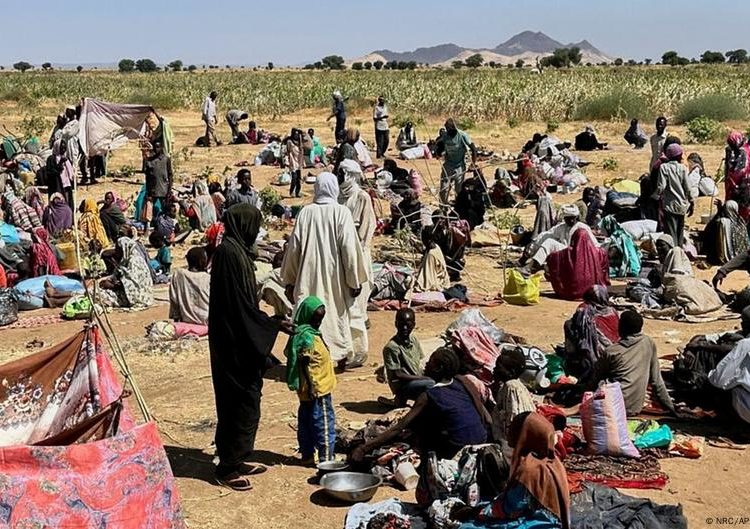In talks leading up to the cease-fire deal between Hamas and Israel, President Trump said he told Prime Minister Benjamin Netanyahu, “You’re going to be remembered for this” — ending the war in Gaza — “far more than if you kept this thing going, going, going, kill, kill, kill.”
Kill, kill, kill: With those words, Mr. Trump evoked the large-scale loss of life in two years of fighting. Not since the smiting days of the Old Testament have Jews killed as many people as we have killed in Gaza. The number is staggering and may reach 100,000 civilians and combatants when the rubble is cleared. This is not an accusation. It’s just the plain truth.
No matter how we explain, justify or name it, this fact remains, and it is one that Jews — whether they opposed or supported Israel’s conduct in the war — especially in Israel but also abroad, must reckon with if the Jewish community is ever to extricate itself from the trauma of this war, which began with the Oct. 7, 2023, attack by Hamas that left some 1,200 people in Israel dead. As a nation proud of its moral tradition, how do we do this?
The first step is grappling with the truth. In discussions with colleagues, friends and students, I often hear three arguments to justify the high casualty account: that killing tens of thousands in Gaza was necessary, the killing was not Israel’s fault and the death toll was the inevitable outcome of a high-tech war. These claims, however they seem to offset the moral costs, are partial truths at best, assumptions we must honestly confront through concerted debate and public education.
Right now, there are only questions to be asked about these assumptions. We still need to work out the answers.
Killing in war can be deemed necessary, according to international law and just war theory, when it is the only way to sufficiently degrade an aggressor’s military capabilities and thwart the dire threat they pose. The right to self-defensive killing ends when that goal is accomplished.
Here we all must ask ourselves: Did Israel achieve this aim, and — just as importantly — when? Did it occur when the Israel Defense Forces pushed Hamas back in the early days of the fighting, during the first cease-fire in November 2023 or when Hamas’s ability to launch missiles into Israel largely ended some months later? Did it occur as targeted killings of Hamas’s military leadership degraded the group’s command and control infrastructure?
Was Hamas only significantly incapacitated by the time of the second cease-fire in January 2025? Or was it only the week before the latest cease-fire, brokered by Mr. Trump? Sorting this out is essential because any deaths, Israeli or Palestinian, are gratuitous if they were unnecessary. We can close our eyes or we can look back now at missed opportunities, moments of military opposition to continued fighting and shifting public opinion to understand and judge our killing in war.
Even establishing that killing was necessary does not easily explain its scope. Why did Israel need to kill so, so many Palestinians? Is it because of how Hamas fights? Hamas fighters took over schools, while some Palestinian civilians participated in the attack in Israel and others imprisoned hostages in their homes. As a result, the majority of Israelis — 62 percent in a recent poll — remain convinced even today that there are no innocent civilians in Gaza. According to this view, all people living in Gaza are combatants, all fight Israel and none enjoy protection from killing.
And so, by this logic, we must ask: How many civilians in Gaza actually took part in this war? What combat or support roles did they fulfill? Did they include children and the elderly, who make up a significant number of those who have been killed? Only once we have that information can we begin to evaluate how Israel conducted itself in this war. Were the rules of engagement for the I.D.F. sufficiently stringent? Did the military diligently pursue complaints of war crimes? Hamas may bear the lion’s share of fault for starting this war, but Israelis must ask if any is ours.
Hamas’s use of human shields, which it denies, also caused extensive casualties. A thick mattress of living bodies above ground insulated the group’s underground military infrastructure. International law categorically prohibits any use of human shields but offers little guidance to help determine how many casualties are excessive when trying to destroy human-shielded assets. The question runs deeper: Should Israel or any nation fighting a military force so intertwined with the civilian population destroy every available military target when the collateral harm is so great?
A similar question arises considering Israel’s integration of A.I.-assisted systems into its warfare. These systems helped to identify potential military targets in Gaza at a rate exponentially faster and greater than in previous conflicts. More targets mean more killing, none of which is inevitably excessive or unlawful, but it raises a critical question: Were they all necessary?
Addressing these questions frankly requires public forums to draw in politicians, journalists, educators, parents and concerned citizens. The answers won’t come easily. Schools and universities in Israel will soon have to think about how we teach this war. While curriculums are mainly in the hands of the education ministry, concerned citizens should push government officials to encourage students and teachers to scrutinize our conduct in the war.
Information is a crucial component of this reckoning. The government must allow an official commission of inquiry to move forward, and we need internal I.D.F. investigations to be made public. Otherwise our efforts will fall disappointingly short. The I.D.F. objected to continued warfare in early 2025, and more data will illuminate why it believed that and why it was overruled. If they rise to the occasion, investigators can tell us what commanders thought about the necessity of particular operations, the details of friendly-fire and operational deaths and, hopefully, offer a peek into the black box of A.I. targeting.
“Kill, kill, kill” is not an unavoidable outcome of war. With a fragile cease-fire in place, many have set their eyes on distant reconciliation between Israelis and Palestinians. It is no accident that the process is often called “truth and reconciliation.” Facing the truth is among the next necessary steps if we are to come to grips with this horrific war and find peace.
Michael L. Gross is a professor of political science at the University of Haifa. He is the author of “Military Medical Ethics in Contemporary Armed Conflict” and “The Ethics of Insurgency.”
The Times is committed to publishing a diversity of letters to the editor. We’d like to hear what you think about this or any of our articles. Here are some tips. And here’s our email: [email protected].
Follow the New York Times Opinion section on Facebook, Instagram, TikTok, Bluesky, WhatsApp and Threads.
The post ‘Kill, Kill, Kill’: How to Wrestle With Death in Gaza appeared first on New York Times.




